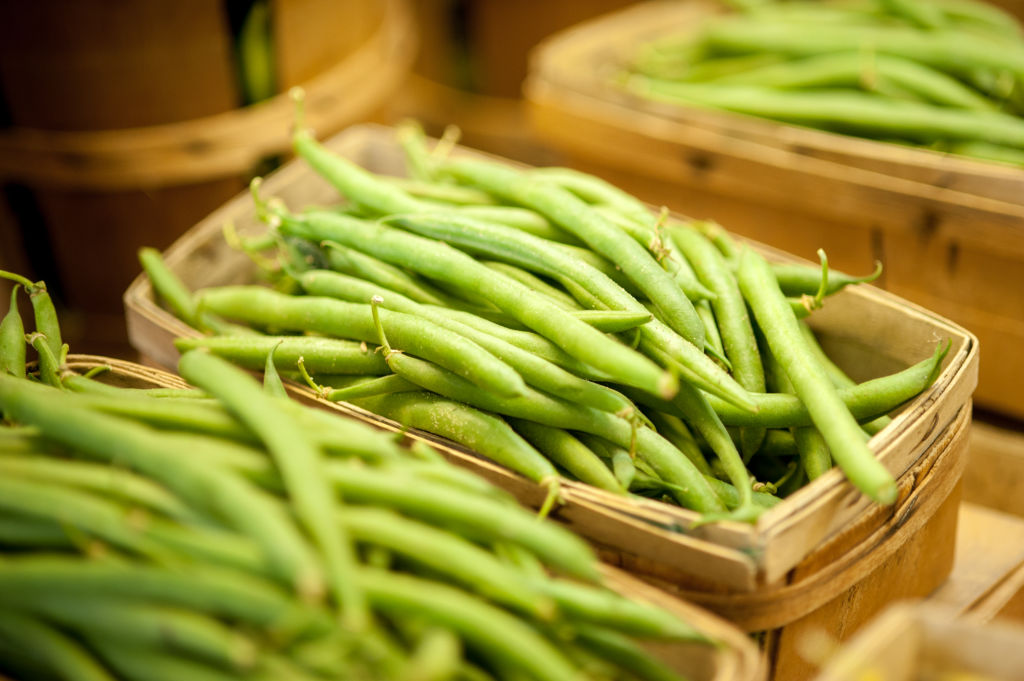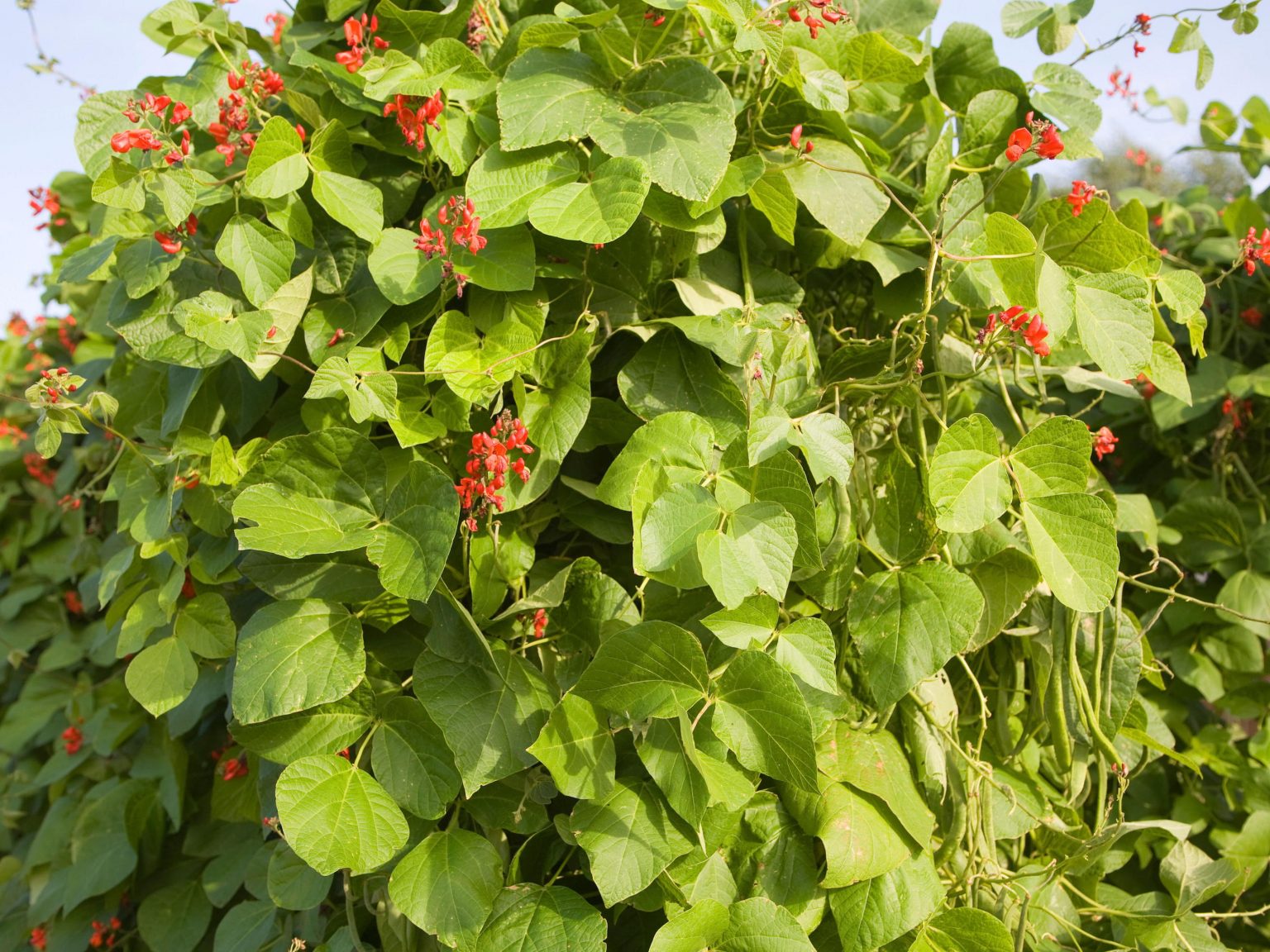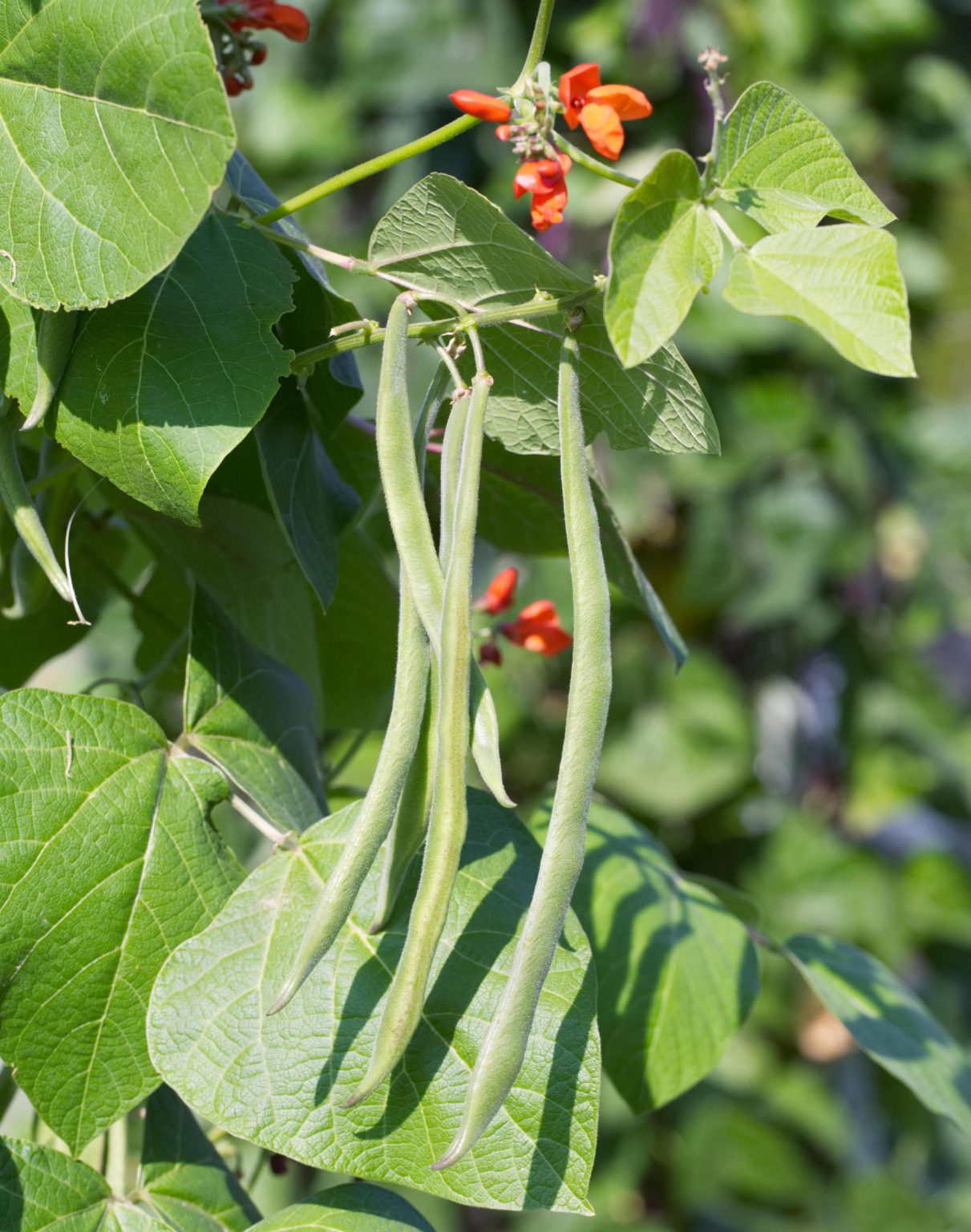How to grow runner beans: it's easy with our step-by-step guide
Learn how to grow runner beans for tasty veg and beautiful floral displays


Learning how to grow runner beans is a rite of passage for grow-your-own enthusiasts in the UK. They're easy to grow, great for small spaces, and put on stunning floral displays, as well as producing pods that are both nutritious and tasty to eat.
There are varieties of runner bean that are sown indoors from April, as well as those that are planted directly outdoors in late June and July. Always refer to your seed packet before planting to check the best way to grow yours.
Ideally, select a sunny but sheltered spot in well-drained soil. 'Choose somewhere sheltered, which helps to attract pollinating bees, or erect windbreak material,' says fruit and veg expert Lucy Chamberlain. 'Allowing the plants to develop an extensive root system in deep, moist soil before flowers begin to develop is key to success.'
Take a look at our complete guide to growing runner beans, from how long until they're ready to harvest, to different varieties to try and how to avoid common pests. And if you fancy learning how to grow garlic or any other veg, you'll find plenty of advice on our grow your own hub.
How to grow runner beans

1. If sowing your runner beans indoors during April or May, fill pots 7cm pots with moist, multi-purpose compost.
2. Sow one seed per pot, pushing it down to 5cm deep and water well. Place in a greenhouse or on a sunny windowsill and water regularly.
3. While waiting for the seeds to germinate and plants to establish, prepare the soil in your bed outdoors. Break up any compact soil by digging over the plot to a depth of 30cm and adding well-rotted organic matter, such as manure.
4. Begin to harden off your young plants gradually in late May. Do this by moving the plants outdoors during the day, then bringing them in at night for a week. The following week, leave them outside in their pots full time, then they are ready to plant into beds.
5. While hardening off your runner bean plants, make sure your supports are in place before, as runner beans are vigorous climbers. Choose bamboo canes or hazel sticks. Try A-frame, wigwam or X-shape. Leave 60cm between the base of your canes for best results.
6. Plant out one runner bean plant per cane. If planting more than one row of runner beans, leave 1.5m between rows.
7. Alternatively, sow your chosen runner bean seeds straight outdoors from the middle of May until July. Sow the seeds 5cm deep, with two seeds to a cane and then thin to one seedling as they grow.
8. As shoots near the tops of their supports, pinch out to prevent plants becoming top-heavy,
9. Water well, especially when buds start to appear.
Tips for growing runner beans successfully
- 'Choose somewhere sheltered to grow your runner beans, which helps to attract pollinating bees, or erect windbreak material,' says fruit and veg expert Lucy Chamberlain
- Add organic matter: well-rotted farmyard manure is ideal
- Ensure plants are well watered once flowering begins, and add moisture-retaining bark mulches. Our ultimate guide to mulching is packed with lots of expert tips.
- A regular high-nitrogen liquid feed will help to boost yields
The best places to buy runner bean seeds
- Thompson & Morgan runner bean seeds
- Dobies runner bean seeds
- Suttons runner bean seeds
- Waitrose Garden runner bean seeds
When are runner beans ready to pick?
Start harvesting when the pods are 15-20cm long and before the beans inside begin to swell.
Make sure that you pick regularly to prevent any pods reaching maturity; once this happens plants will stop flowering and no more pods will be set. If you pick regularly, your runner bean plants will crop for eight weeks or more.
Varieties of runner bean to grow

- Firestorm – A self-fertile runner with French bean in its breeding. This AGM winner sets better crops in inclement and hot weather than standard types, with plump pods and a sweet flavour.
- Jackpot – This runner-French bean cross is naturally compact, so it’s ideal for large tubs. High-yielding for a dwarf variety, due to its extended cropping season.
- Red Rum – Red-flowered, high yielding, and bearing tender beans. This early-maturing benchmark variety is still considered worthy of an RHS AGM.
Common problems when growing runner beans
Runner beans attract a few pests that you'll want to discourage. Slugs and snails feed on runner bean seedlings – you'll spot the telltale slime trail across your crop. You can discourage them with methods like eggshell barriers, copper tape, sawdust, or use slug pellets.
According to the RHS, black bean aphids can cause stunted leaves and stems on runner bean plants. You can pinch out infected tips or catch and squash the aphids.
One of the biggest problems with runner beans is plants that don't produce any beans, this is usually caused by lack of moisture or poor pollination. Make sure you plant your beans in soil that had well-rotted manure added to it the previous autumn. And try to choose a sheltered spot as that will encourage bees to visit and pollinate. Planting bee friendly plants nearby is always a good idea too.
More grow your own ideas:
- How to grow tomatoes: it's easy with our guide
- How to grow potatoes: get a plentiful supply with our advice
- How to grow an avocado: it's well worth persevering
Laura has been writing about homes and gardens for 17 years. She joined Real Homes magazine in 2015 as Deputy Editor and then become Editor before taking on her current position as Content Director for brands including Country Homes & Interiors, 25 Beautiful Homes, Period Living and Style at Home. She's currently redesigning the garden of her 1960s home in Worcestershire and will eventually reinstate the swimming pool that's currently filled with mud! Outside of homes, she's a TV presenter for QVC.
